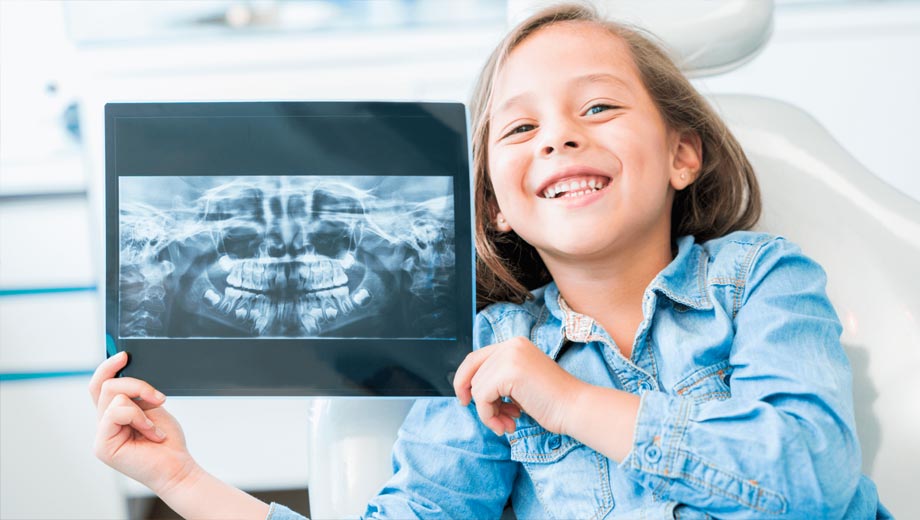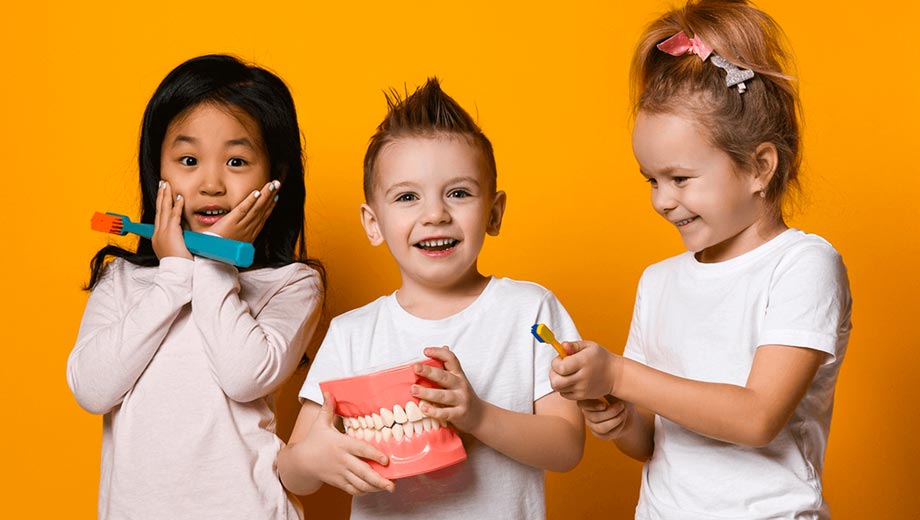Baby Teeth X-Ray
Dental x-rays are essential tools used by pediatric dentists to tell how their patients’ teeth are developing. Specific dental issues are challenging to detect without x-rays, especially if the problems are below the surface.
Our Katy pediatric dentists need dental x-rays to see if the teeth and jaws are growing correctly. Here are common issues x-rays can help bring to light:
- Crowded teeth
- Cavities
- Impacted wisdom teeth
- Missing teeth
- Periodontal disease
Why Are X-Rays Necessary?
The doctor gains a more in-depth look to assess the child’s full dental health by looking at the position of unerupted teeth and potential cavities; thus, identifying and treating problems early on can prevent costly, time-consuming, and even painful procedures later on.
Many parents are concerned about how X-rays can affect their children. Still, the American Academy of Pediatric Dentistry (AAPD) states that the amount of radiation received during an X-ray is small and likely does not affect patients.
There are also guidelines already in place from the AAPD to ensure X-rays are adequately operated, especially on children and teens. Parents should not be worried about bringing their children to the dentist because of X-rays. At Kids Healthy Teeth, our pediatric dentists and dental hygienists are very careful to make sure your child receives safe and effective care.
Going to the dentist every six months is vital to your child’s dental health, but you may not need to get x-rays every time you come to the office. Coming to the dentist for treatment is always the right choice. To learn more about dental checkups and oral hygiene for kids, check out our parent guide below.

Are Dental X-Rays Dangerous?
The benefits of getting dental X-rays far outweigh any potential side effects (which are extremely uncommon), but we understand that parents may still be concerned. At Kids Healthy Teeth, our pediatric dentists use low-radiation X-rays to examine their patient’s teeth, jaws, and overall oral health. During the process, we make sure to protect children from any radiation exposure with proper equipment. We use these procedures in almost all dental practices, and there’s nothing to fear when in need of X-rays!
You can also keep in mind that we only take X-rays of the area we are interested in. We provide all patients with protective gear to shield the rest of their bodies from unnecessary radiation doses. Exposure to any radiation source is always potentially harmful; this includes sunrays, minerals found in soil, and home appliances. Still, the doses you receive are always very low.
Preventing Is Key
Still, you should consider that a professional dental health specialist will only request advanced imaging if it is necessary. We require these resources because there are limitations to what we can see only with our eyes during a routine examination. By the time symptoms are apparent, our hands are tied to what treatments to give your child.

Without x-rays, a pediatric dentist may be unable to determine that there are hidden signs of periodontal disease in your child’s mouth. If left untreated, periodontal disease can make your child lose a primary tooth prematurely. Even if primary teeth are supposed to fall off on their own, losing one prematurely can have several negative consequences.
Losing a baby tooth before your child’s mouth is ready to replace it can lead to orthodontic problems. Teeth can start to overcrowd. If a patient has overcrowded teeth, they are at an increased risk of being unable to clean their teeth properly. It’s harder to clean your own teeth if your toothbrush cannot clean between your teeth, thus increasing the risk of cavity development.
As you can see, neglecting dental care can severely affect your child’s development and overall health. So next time a pediatric dentist brings up the subject of x-rays, they are doing so because they want to help your child maintain their oral health.
How Often Are Dental X-Rays Taken?
A child usually gets their first x-ray when the dentist cannot visibly see the area between a child’s back teeth, and most of the baby teeth have grown in. This situation usually happens around the age of 5 or 6, but we may need to take X-rays much earlier if the child is at risk of tooth decay. After that, x-rays are usually taken every 12 – 24 months, depending on how cavity-prone the child is.
Make sure you ask Dr. Chen when your child should get their first x-rays taken. Together we will continue to work to help your child keep a healthy and beautiful smile!
FAQ
Dental x-rays in Katy are images used by dentists to they can see tooth position and decay and overall the condition of your mouth. Dental x-rays do not hurt and are very fast to get done. X-rays use low levels of radiation to capture images and are harmless.
There are a few different types of dental X-rays in Katy, such as bite-wing X-rays that help to see between the teeth and are good for diagnosing cavities and periodontal disease. Peri-apical xrays show the whole tooth and help diagnose root and nerve problems. A panoramic x-ray is large and shows full tooth placement and jaw development, and health.
Dental x-rays in Katy are taken in our office. We will either have you stand or sit upright in a chair. You will have to wear a lead apron for radiation protection during the x-ray process. We will put x-ray sensors within the mouth to capture photos of your teeth. Afterward, we remove the apron, and you are onto the next part of your dental visit!
Everyone needs Katy dental x-rays to be taken when you come in. X-rays not only show the positioning of teeth within your mouth, but they can also detect decay. We can see dental decay on X-ray images, and it helps us determine where the cavity is and how large or small it is.
You should get Katy Dental X-rays whenever prescribed by your doctor depending on your age and risk of dental decay. Some xrays are prescribed to monitor growth and development or to look for pathology.


